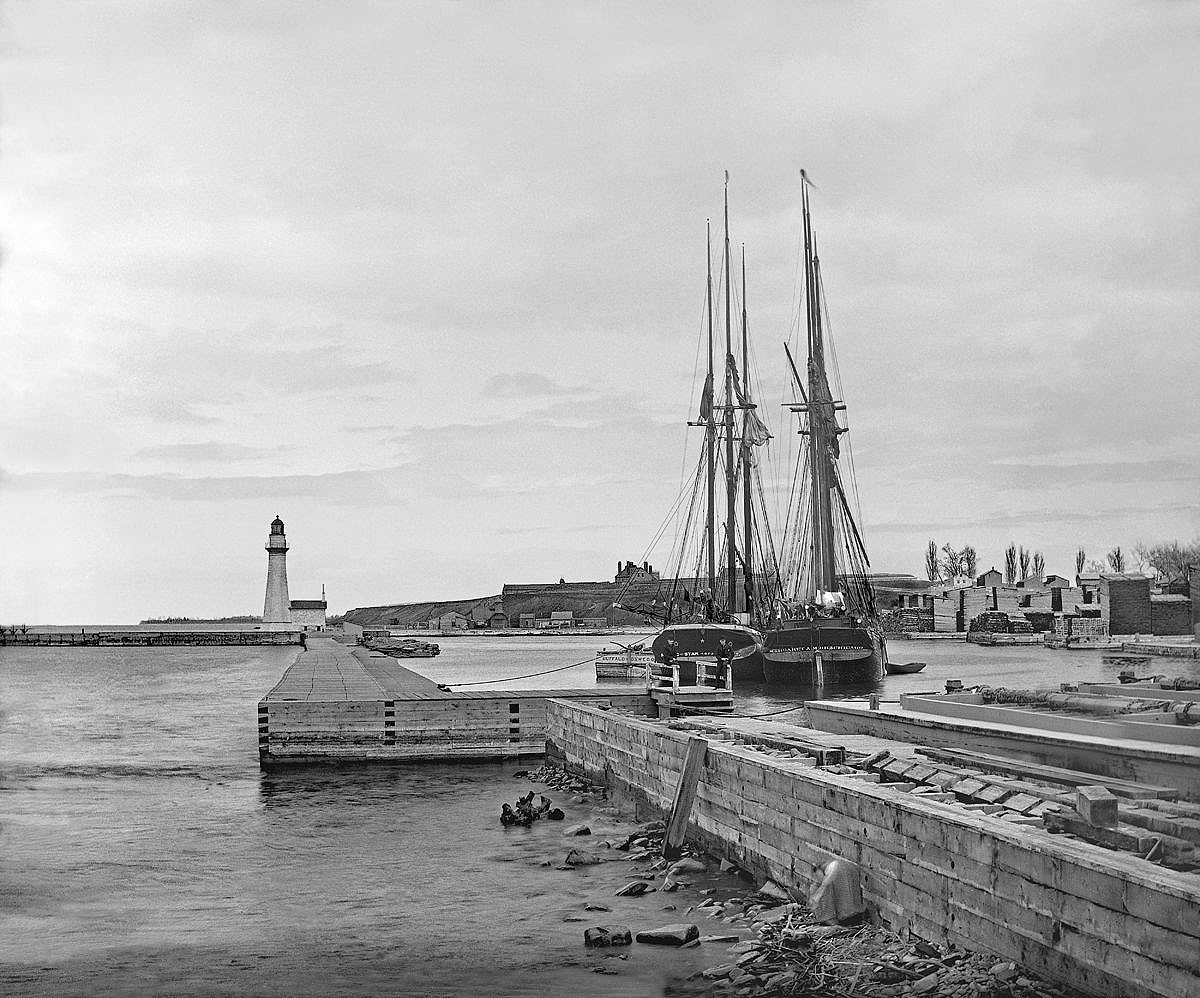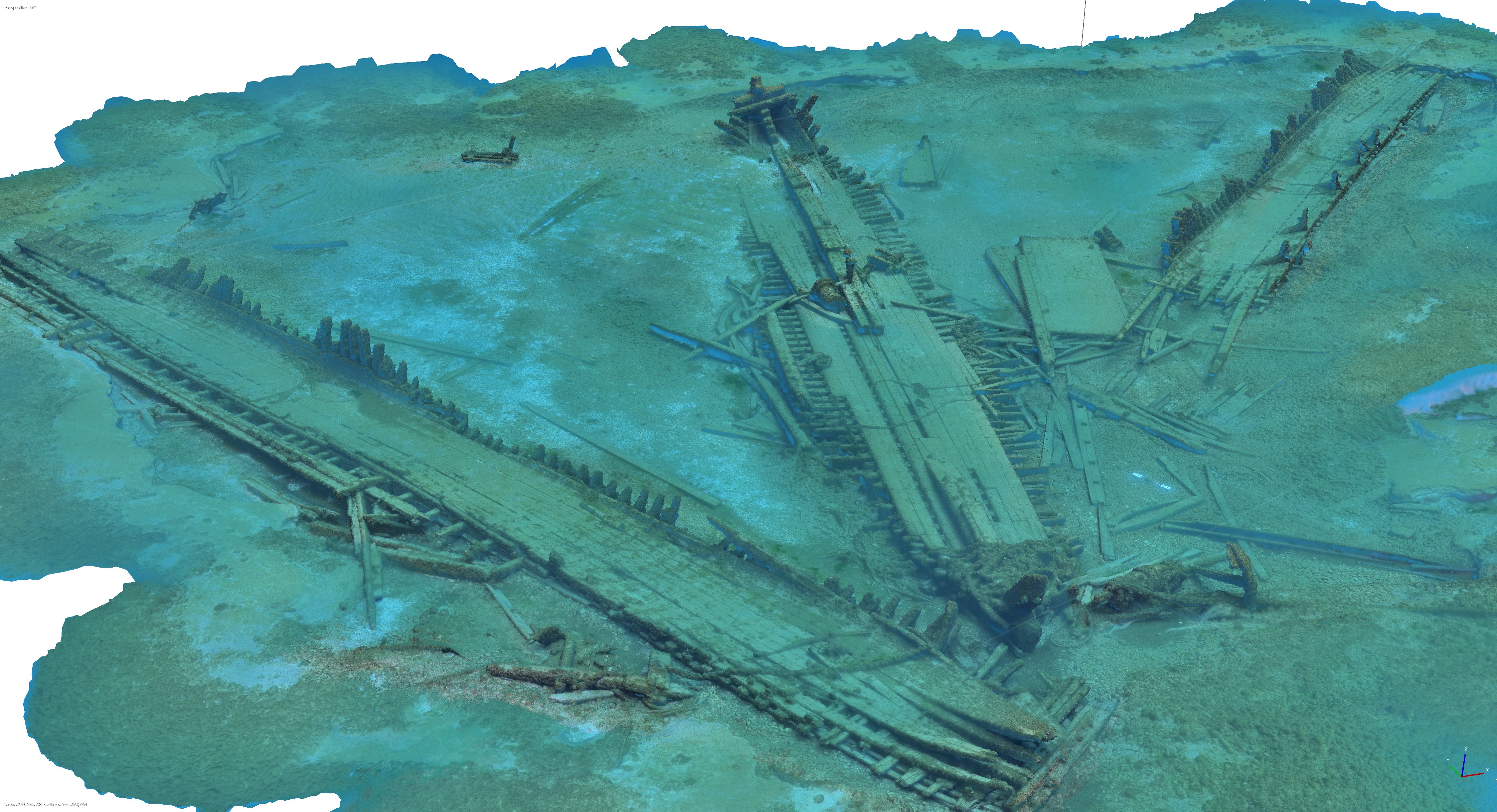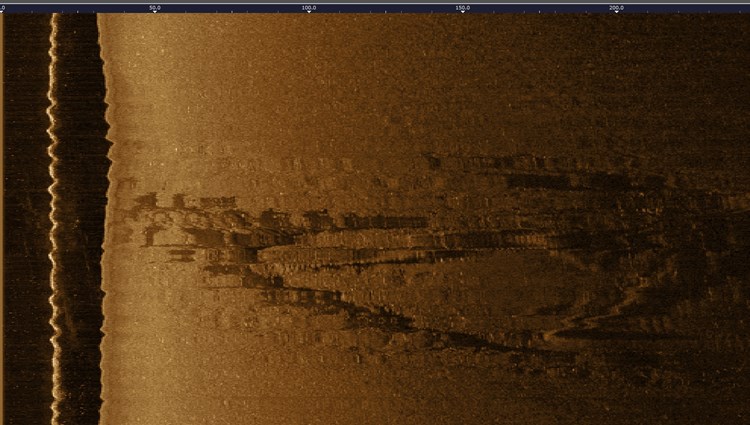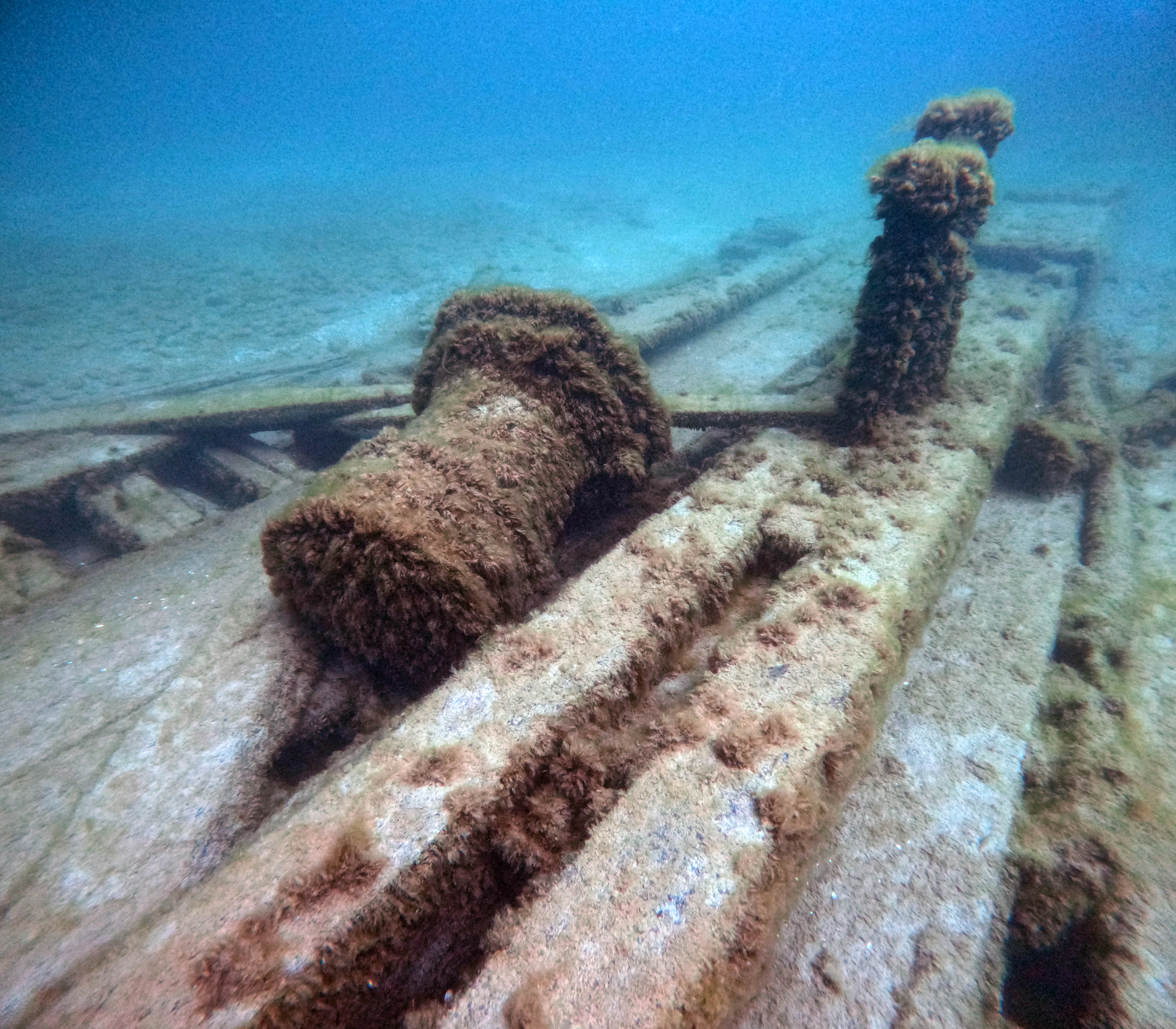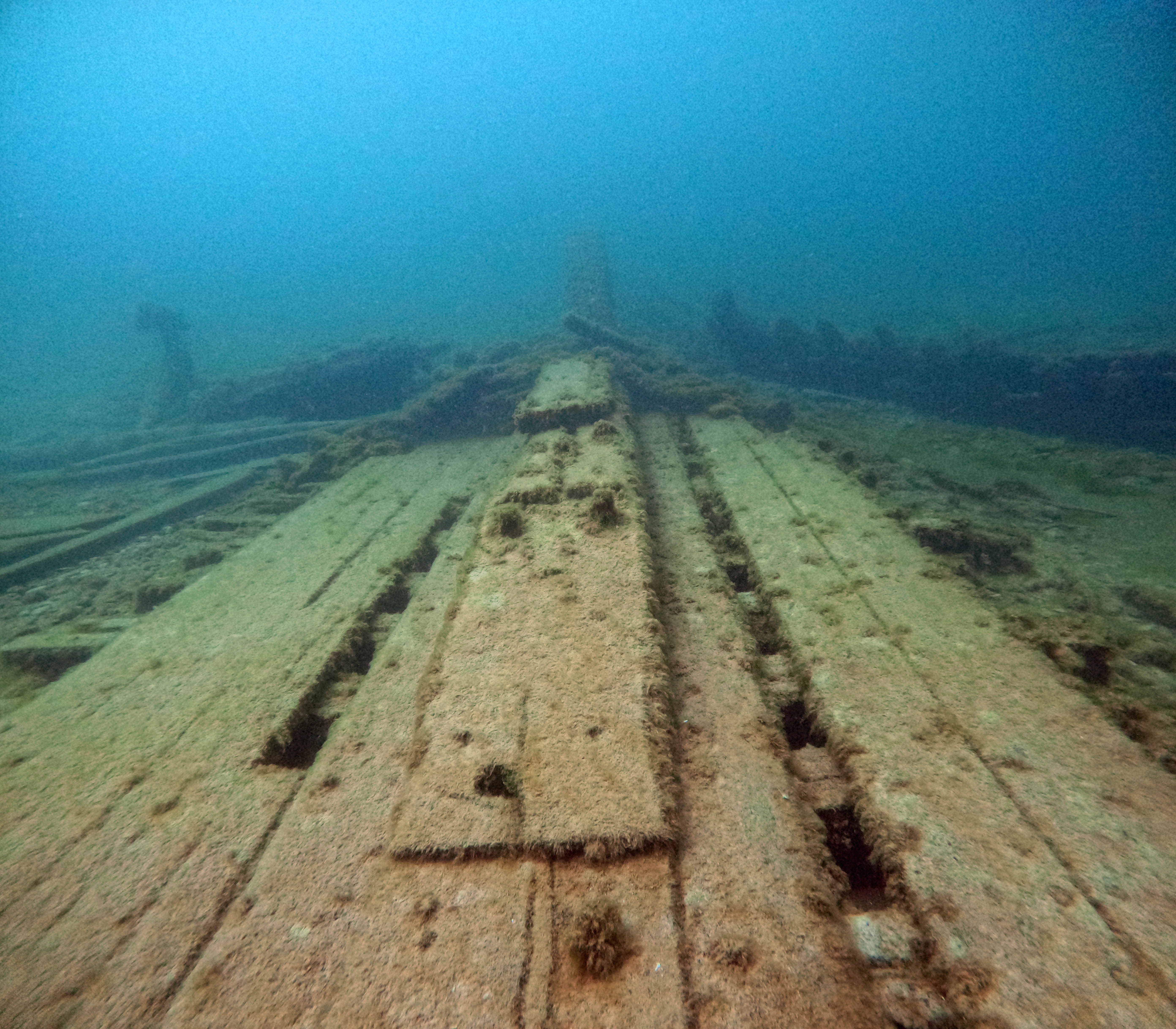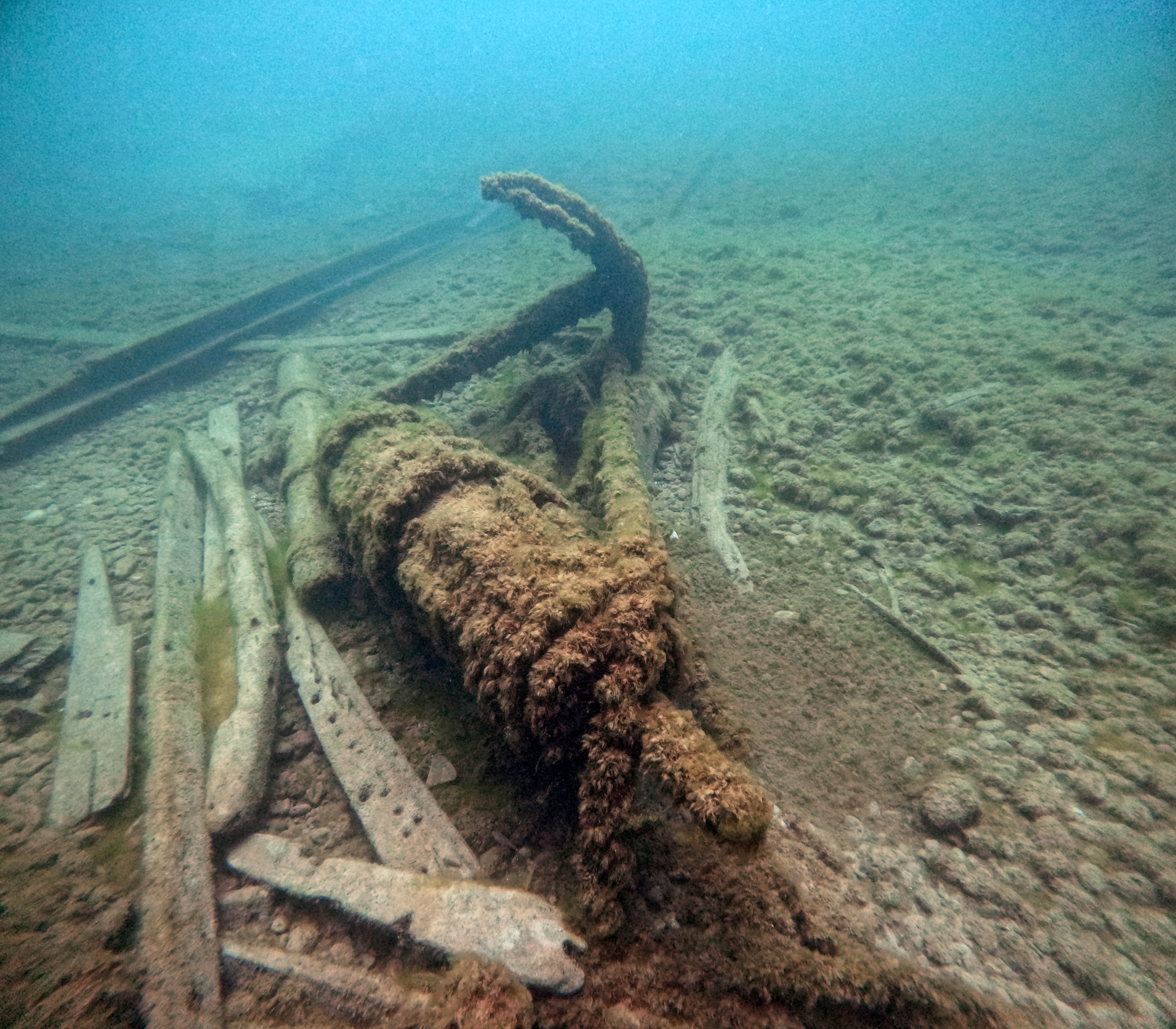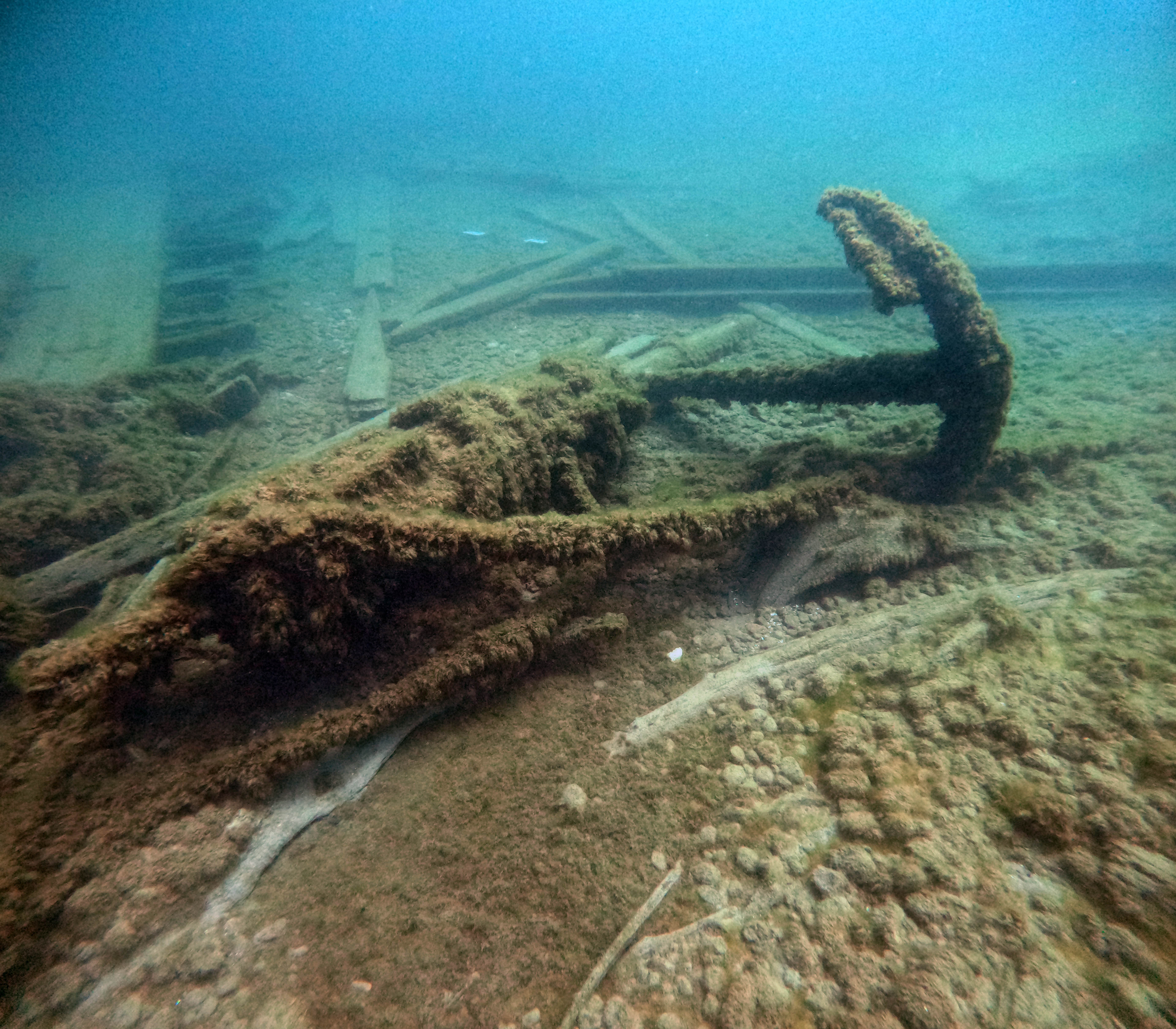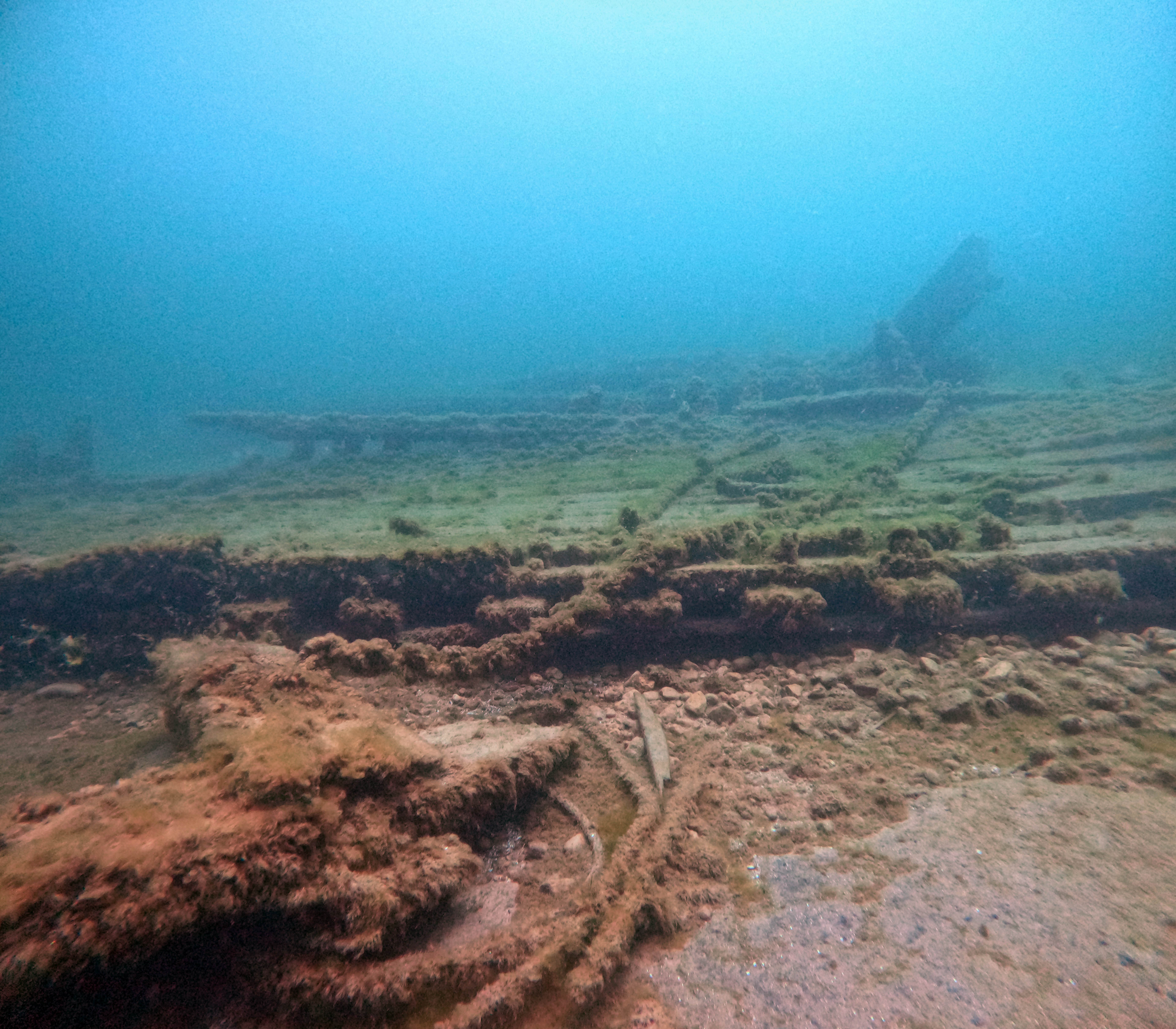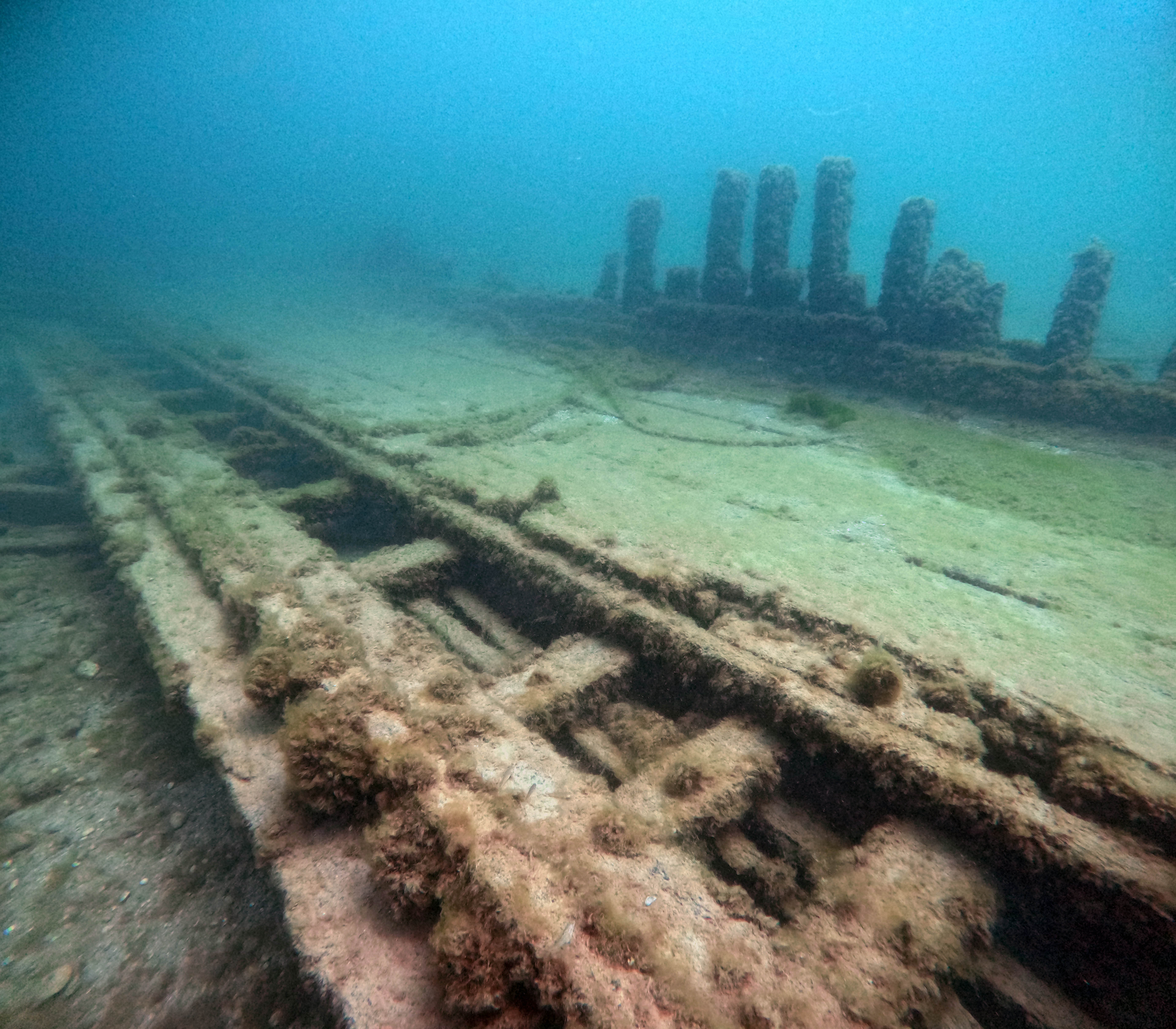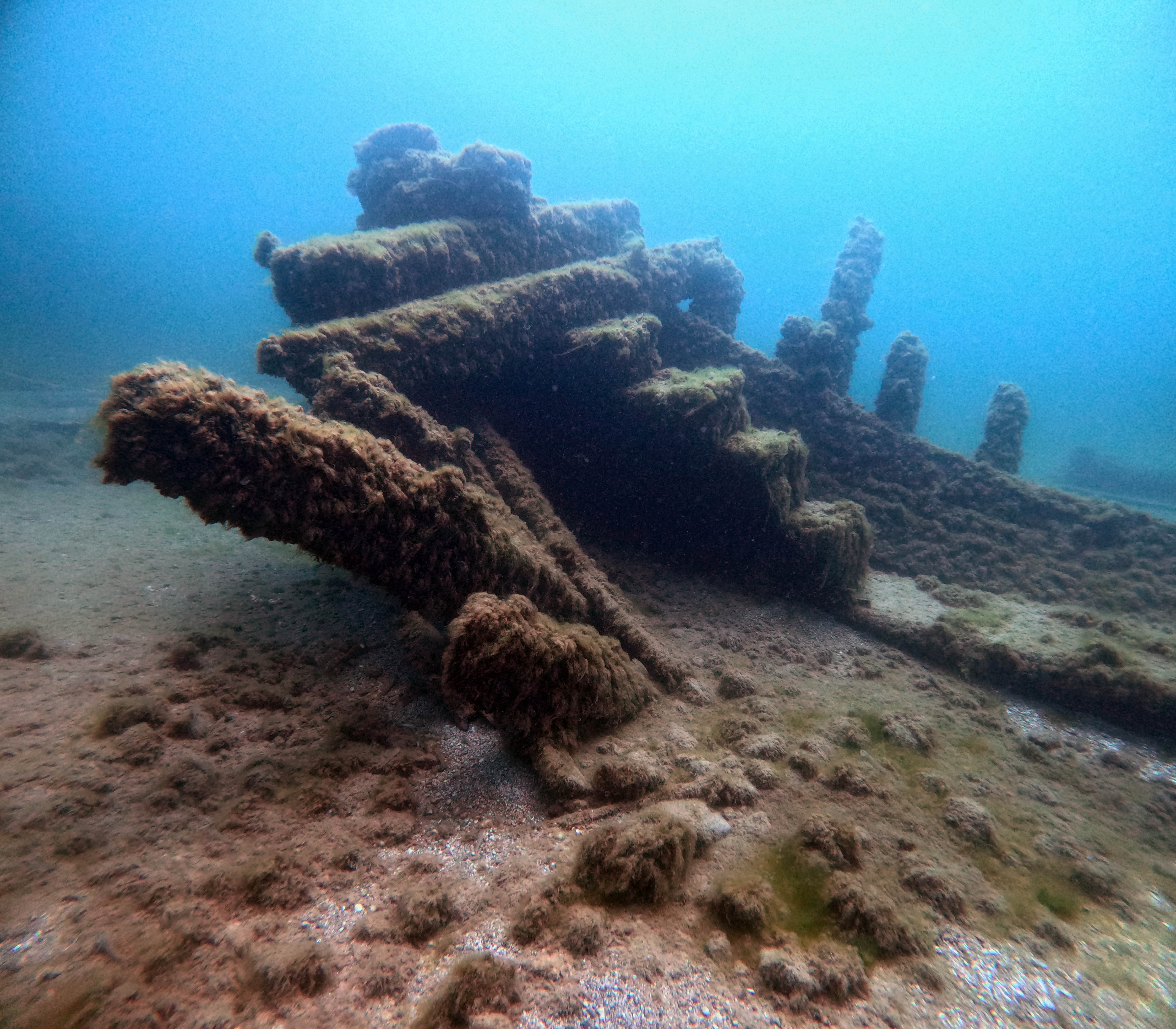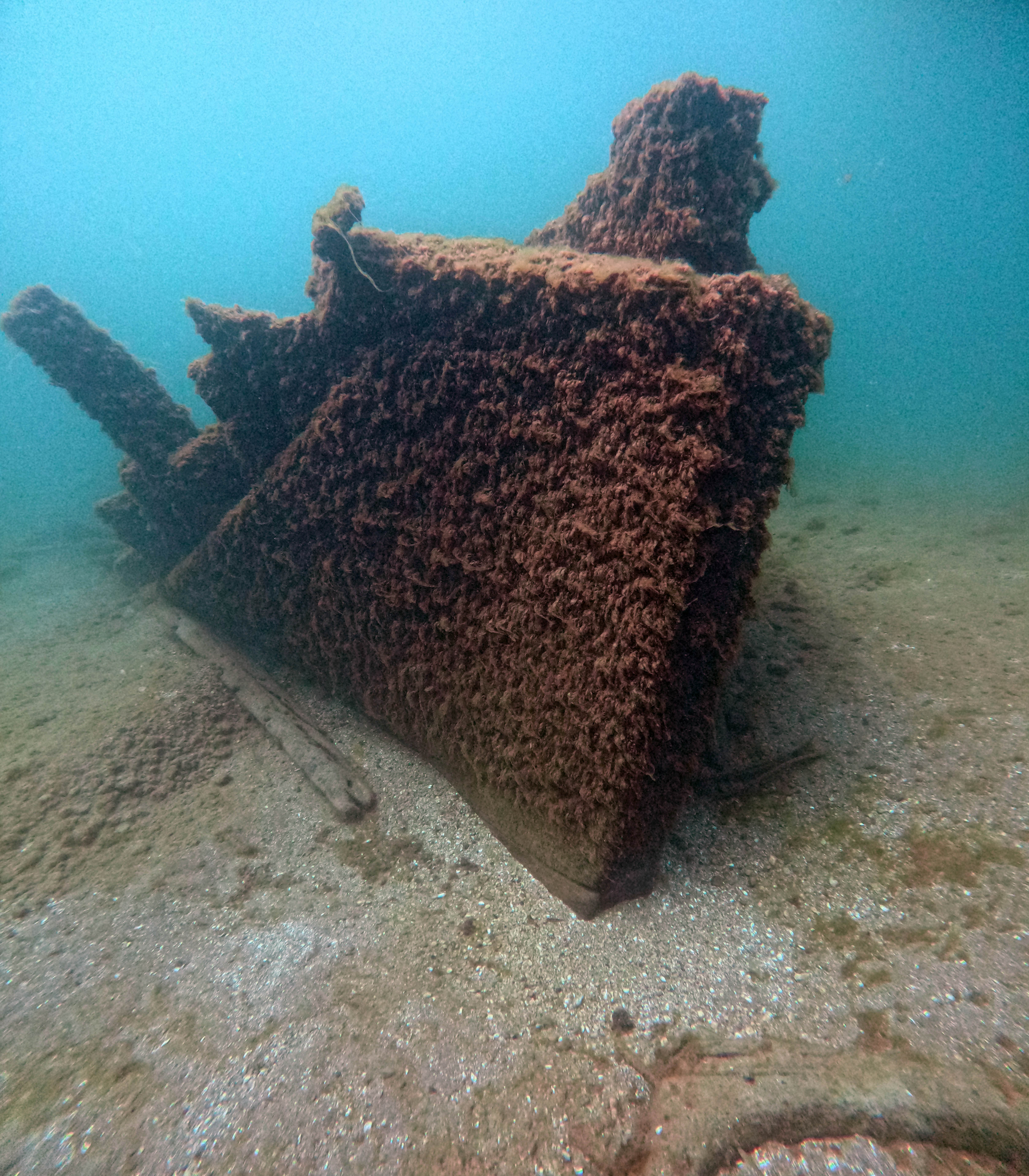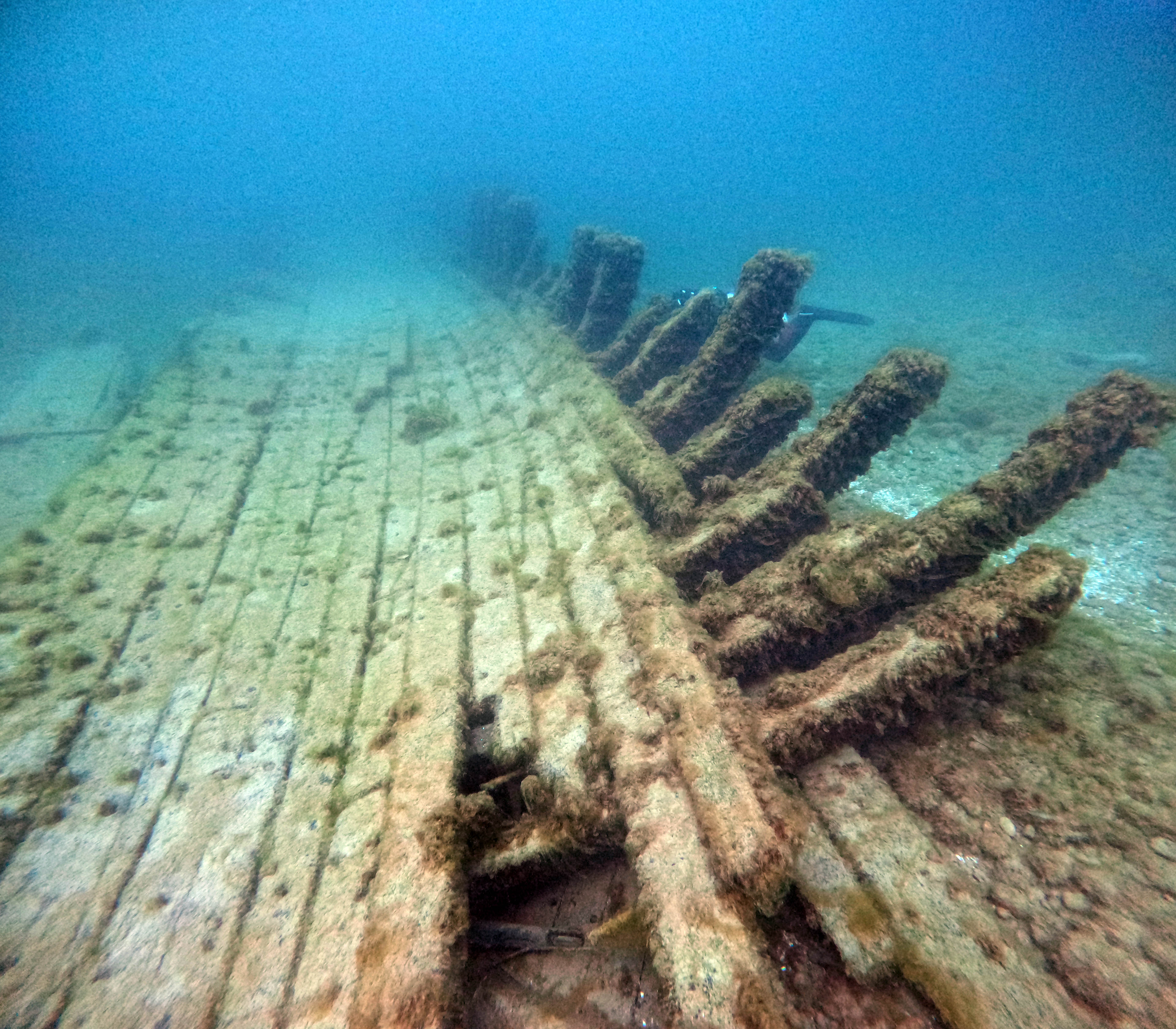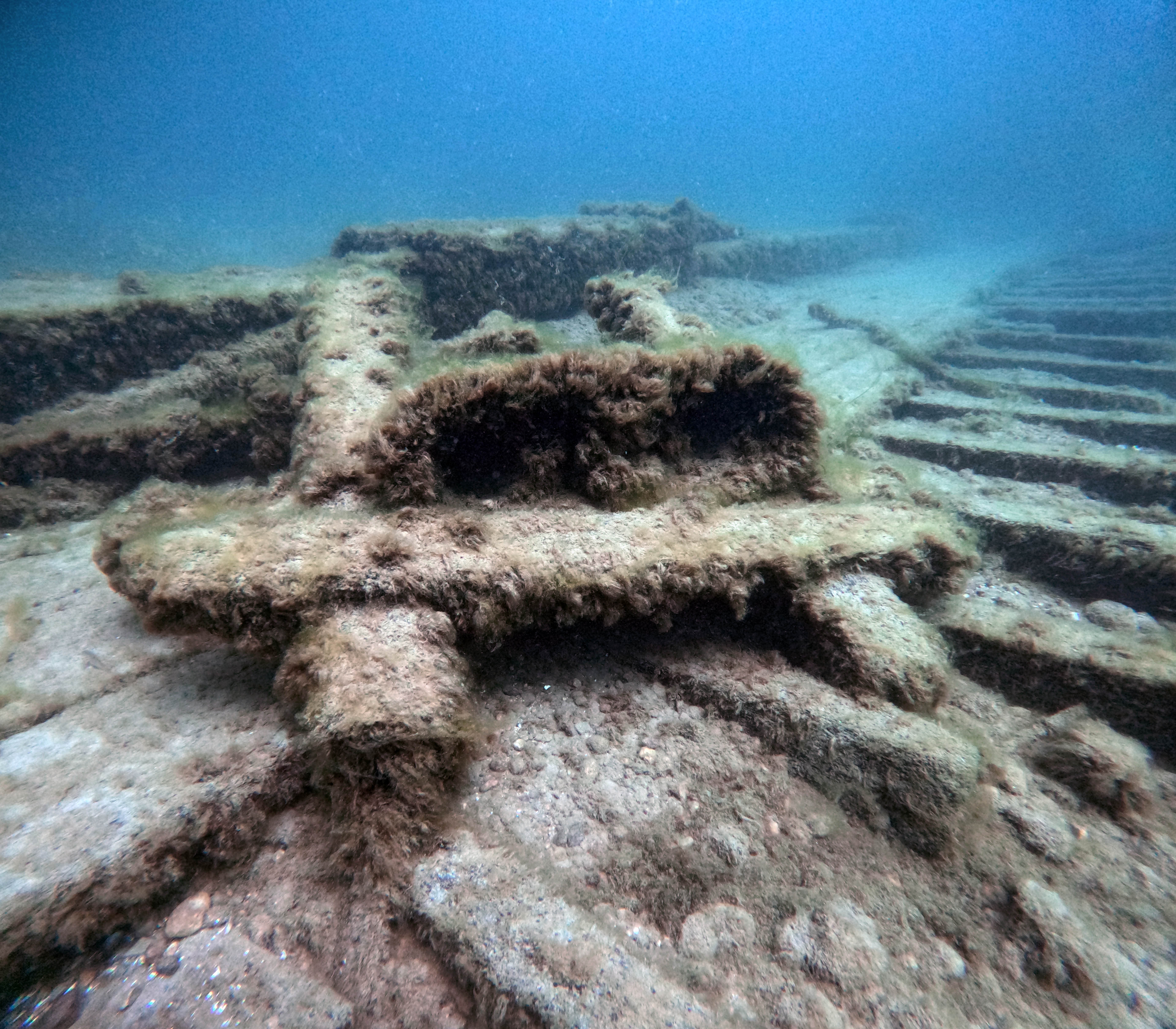Service History
The wooden three masted schooner
Margaret A. Muir was built in 1872 at the shipyard of Jasper Hanson and H.M. Scove in Manitowoc, Wisconsin. On 19 November 1872 after loading a cargo of wheat in Milwaukee, for Port Colborne, Ontario the
Muir was found to be leaking. A portion of the cargo was removed, and the leak was found to be in one of the ports and was soon repaired. On 4 November 1875 the
Muir while loaded with coal, had collided with the schooner
Senator Blood on Lake Erie near Point au Pelee. The
Muir lost its mizzenmast and was towed to Toronto by the tug
Quayle and the
Blood loaded with grain, was towed to Toronto by the tug
Torrent with $600 worth of damage and leaking badly. For part of its career, the
transported iron ore from Escanaba, Michigan to Sandusky and other ports in Ohio and returned with coal from Ohio to Manitowoc or Escanaba. The vessel would also be used in the grain trade during its career, hauling grain from ports like Milwaukee or Chicago to Buffalo.
On 17 October 1876, while sailing through a gale, the Margaret A. Muir ran from Long Point to Four Mile Point on Lake Erie, a distance of forty-five miles in four hours. Later on 28 October the schooner was run into in the vicinity of the flats and lost its jibboom. Captain David Muir of the Margaret A. Muir proclaimed to all mariners on the Great lakes on 25 April 1878, prophesying that "unless some united action is taken to protect vessel interests, there will not be a boat on the lakes in twenty-five years uncontrolled by the railroad companies excepting some little fishing boat, of which the crew will be captain and the captain crew." On 13 November 1879 the Margaret A. Muir ran aground on the South end of North Harbor Reef. Captain David Muir took to the ship’s yawl to the mouth of the Detroit River where he found the tug Champion which went to try to pull the ship off the reef and in the process of doing so broke all of its line. The Champion had to leave the vessel for a new hawser, pump and lighter. Later that day the schooner had a portion of its cargo of grain lightered off and was released. The Muir was able to resume its voyage to Buffalo.
On 20 April 1880, the Muir had its rigging torn while being towed to the Miller Brothers drydock in Chicago. On 7 May 1880, the Margaret A. Muir was disabled after its foremast broke just under the crosstrees and when it fell drew the mainmast which broke in the same place. The strain on the ship's stays then brought down the mizzen topmast leaving the Muir with only its mizzen sail to maneuver. The vessel was traveling across Northern Lake Michigan through the Straits of Mackinac and was into northern Lake Huron when the damage was done. The stricken disabled vessel was towed by the steambarge R.J. Hackett to Port Huron Michigan. Before the Hackett picked up the Margaret A. Muir a boat was sent back to Escanaba for assistance and a tug was dispatched but did not arrive in time to pick up the schooner. The Margaret A. Muir was turned over to the tug Champion towed the disabled schooner the rest of the way to Cleveland, Ohio to unload its cargo and for repairs.
On 21 September 1883 "a peck of trouble" was reported aboard the Margaret A. Muir when three crews of non-union sailors were forced off the vessel while in Chicago. While being towed out of Chicago by the tug Prindiville, the grain laden Muir, was passing the Clark Street Bridge where the schooner encountered congestion on the Chicago River. The steambarge Emma E. Thompson after being forced over from its side of the channel by another tow, collided with the Muir. As a result, the Muir lost its jibboom and headgear. The tug Prindiville narrowly escaped sinking. The Muir had to remain in port for repairs and when the vessel arrived at the pier, the non-union men aboard abandoned ship after fearing another raid from the "committee". The Emma E. Thompson sustained only moderate damage.
On 4 October 1887, the Margaret A. Muir was towed into Buffalo, New York by the tug Bruce after the schooner's foresail was split, the foregaff carried away and some sails carried away in a storm. On 18 October 1889, the Margaret A. Muir was disabled in Cleveland after it had lost its jibboom, foretopmast, maintopmast, and three jibs in a gale.
The Margaret A. Muir was used as an example in the unsafe practice of steamers entering and exiting the port of Buffalo at full speed which would endanger other vessels. While departing port on 10 October 1890, the steamer Northern Light departed at full speed and succeeded in breaking every line on the Margaret A. Muir and the W.H. Rounds while they were docked in port next to the Custom House. The Muir and the Rounds drifted from the pier and the Rounds was thrown forward by a large wave and narrowly missed colliding with the Muir.
Final Voyage
While enroute from Bay City to Chicago with a cargo of barreled salt, the Margaret A. Muir encountered a storm and the crew noticed their vessel settling in the water at about 7:30 on the morning of 30 September 1893. The crew attempted to get the craft on an outward tack by weathering when the Muir made a heavy lurch and righted with decks underwater. The crew attempted to bring the Muir into stays. The ship's yawl was lowered and the seven crew barely had time to clamber aboard. The Margaret A. Muir lurched and sank.
Captain David Clow reported: "When the gale struck us, we were in the middle of the lake sailing southward and westward for the west shore of the lake. The wind continued to blow harder by the hour all Friday night, but our boat did fairly well and frequent trials at the pumps showed that no water was coming into the hold. Early Saturday morning the schooner got into the trough of the sea. Huge mountains of water fell on her deck. I do not think she foundered from any water that came through except that which fell on the deck. I rushed after and began cutting and slashing to get the lifeboat free. We didn't lose a minute's time and had just gotten into our lifeboat when the schooner keeled over and filled out lifeboat with water. Fortunately, it was not capsized at all, and we succeeded in bailing it out. We were four miles out from shore and had several narrow escapes from drowning on the way in. In getting through the breakers, it seemed as if every man must be drowned, but luck was with us and we all got on the beach safely, the loss of the Muir was not caused by and leak I am certain of that for we tried the pump just before she went down we were simply engulfed by water and drowned like rats in a hole." The captain’s dog went down with the vessel.
Today
The wreck of the Margaret A. Muir lies broken up in 50 feet of water only a few miles outside the entrance to Algoma. The vessel was relocated by maritime historians Brendon Baillod, Bob Jaeck, and Kevin Cullen in May of 2024.
